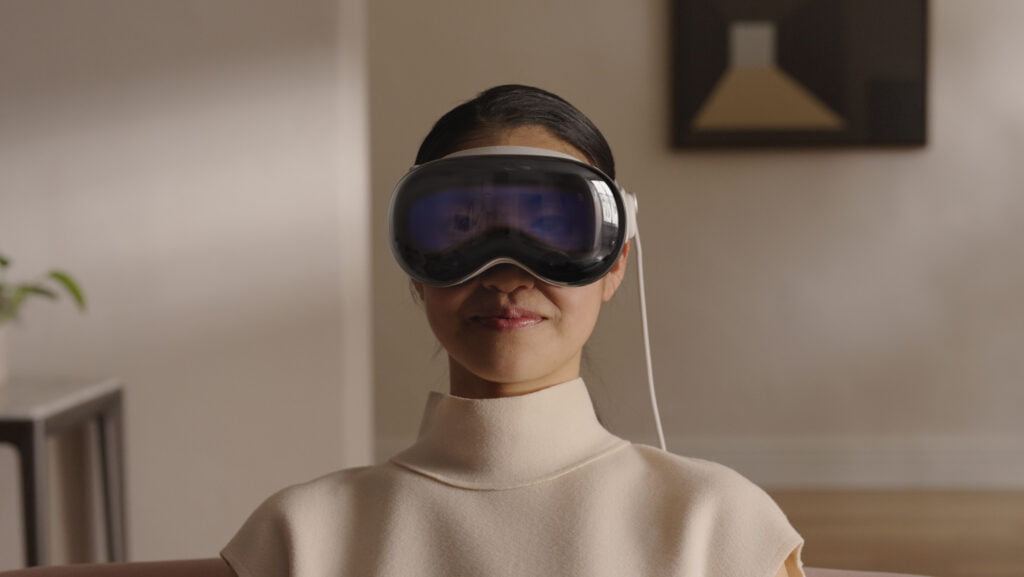Since the unveiling of Google Glass in 2013, the concept of augmented reality (AR) glasses has captured the imagination of tech enthusiasts worldwide. However, Google’s ambitious project faced significant challenges, leading to its eventual discontinuation. Now, Apple has entered the AR glasses arena with the announcement of Apple’s Vision Pro. With its history of groundbreaking innovations, Apple aims to overcome the obstacles that hindered Google Glass and revolutionize the market. In this article, we will explore five key factors that could determine whether Apple’s Vision Pro can succeed where Google Glass fell short.
Design and Aesthetics
One of the primary reasons behind Google Glass’s lukewarm reception was its awkward and bulky design. The device looked more like a futuristic experiment than a stylish accessory. Apple’s Vision Pro, on the other hand, is expected to embody the company’s renowned commitment to sleek and elegant design. Leveraging its expertise in creating aesthetically pleasing products like the iPhone and Apple Watch, Apple could potentially create AR glasses that seamlessly blend technology with fashion. By offering a stylish and visually appealing design, Apple’s Vision Pro has the potential to entice a broader range of consumers who value both functionality and aesthetics.
User Experience and Functionality
A crucial aspect that contributed to Google Glass’s failure was its complicated user interface and limited functionality. The device struggled to offer a seamless and intuitive user experience, making it difficult for users to fully embrace its potential. Apple’s Vision Pro aims to address this by leveraging its expertise in creating user-friendly interfaces. Apple’s AR glasses are rumored to integrate seamlessly with existing Apple devices and services, allowing for a more cohesive user experience. If Apple can deliver on this promise, the Vision Pro could provide users with a comprehensive and intuitive AR experience, overcoming one of Google Glass’s key shortcomings.
Developer Ecosystem
An essential factor that determines the success of any platform is the strength of its developer ecosystem. Google Glass struggled to attract developers to create compelling applications, resulting in limited functionality for users. Apple, known for its thriving App Store ecosystem, has a significant advantage in this regard. With an existing base of millions of developers experienced in building apps for iOS devices, Apple’s Vision Pro could potentially have access to a wide range of innovative and useful applications right from its launch. This robust developer ecosystem could significantly enhance the appeal and functionality of Apple’s AR glasses, setting them apart from Google Glass.
Privacy and Data Security
Privacy concerns were another major hurdle that hampered the acceptance of Google Glass. The device’s camera and always-on connectivity raised alarms about potential invasions of privacy. Apple has built a reputation for prioritizing user privacy and data security, which could be a crucial differentiating factor for Apple’s Vision Pro. With features like on-device processing and stringent privacy protocols, Apple’s AR glasses might alleviate concerns and offer users greater control over their personal data. By addressing privacy concerns head-on, Apple has the opportunity to establish trust and position its Vision Pro as a more secure alternative to Google Glass.
Ecosystem Integration and Services
Apple’s strength lies in its ability to create a cohesive ecosystem of devices and services. By leveraging this ecosystem, Apple’s Vision Pro can seamlessly integrate with various Apple products like the iPhone, Apple Watch, and HomePod. This integration could offer users a unique and interconnected experience, enabling them to leverage the capabilities of multiple devices simultaneously. For example, users might receive notifications, answer calls, or control smart home devices directly through their AR glasses. By providing a comprehensive ecosystem integration, Apple has the potential to create a compelling user experience that sets its Vision Pro apart from the standalone nature of Google Glass.
Conclusion
Apple’s Vision Pro represents the company’s foray into the augmented reality glasses market, aiming to succeed where Google Glass fell short. By focusing on design, user experience, developer ecosystem, privacy, and ecosystem integration, Apple has the opportunity to overcome the challenges faced by its predecessor. However, the success of Apple’s Vision Pro will ultimately depend on the execution of these key factors. If Apple can deliver a stylish, user-friendly, and privacy-focused AR glasses experience while integrating seamlessly with its existing ecosystem, it has the potential to revolutionize the market and establish itself as the leader in augmented reality technology. Only time will tell if Apple’s Vision Pro can realize its full potential and reshape the future of wearable AR.



